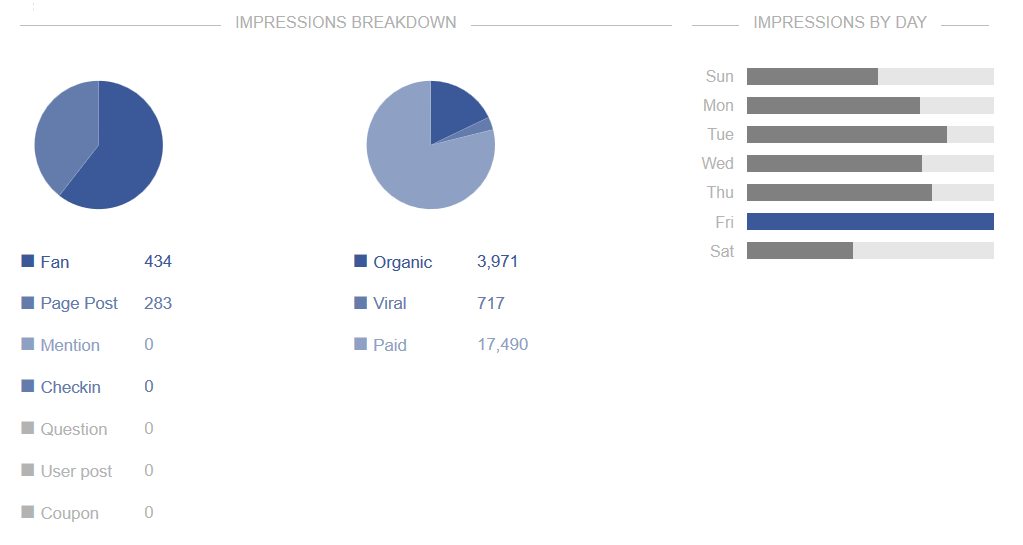Your cart is currently empty!

Viral vs. Organic at Facebook
There are three kinds of Facebook traffic: Viral, Organic, and Paid.
Paid traffic is pretty clear, since it is the traffic resulting from your paid Facebook ads. Facebook ads can be a very cost-effective approach to gaining traffic at Facebook, if you configure your ads wisely, and you can readily see details about your paid traffic in the ad manager interface at Facebook.
But what are viral and organic traffic at Facebook? Typically, when we talk about organic traffic, we’re talking about people finding your content by searching for it, and viral traffic usually refers to content which has spread from one person to another like a virus until it reaches a much larger number of people than usual.
At Facebook, however, “organic” doesn’t always mean search and “viral” can be a reach of four people. So what exactly do these terms mean?

The organic reach at this Facebook business page was 6,674 people. This means that all those people had posts from this company page on their Facebook timelines, sent by Facebook, or they visited the Facebook business page, either by searching or by going directly.
This is not what “organic” means in Google Analytics.
As for the 2,417 viral reach, that means that 2,417 people had this company’s posts on their timelines because the posts were shared with them by a friend — like a virus, but not necessarily viral in the sense of being wildly popular, which is how we often use the term in casual conversation about social media. In fact, Facebook insights has now clarified this term by renaming it “Reactions, Comments & Shares.”
So “viral” and “organic” in your Facebook stats refer to the decision-maker: when people choose to see your post or Facebook chooses to show it, that’s organic; when people’s friends choose to share something with them, that’s viral.
What does this mean for your business or brand? Notice the posts that end up being shared, and do more of those in order to reach new people. Notice the posts that bring people to your page through search or being posted by Facebook and do more of those to draw likely customers.
As always, align those goals with your business goals.
by
Tags:
Comments
2 responses to “Viral vs. Organic at Facebook”
-
I think it also mainly depends on the types of posts that you guys publish. Facebook is becoming super restrictive and super picky about the feed and doesn’t allow anything too promotional.
-
Very true. In fact, Facebook has made it pretty clear that businesses have to pay to play. If you never boost your posts or run ads, you can’t expect your promotional posts to be seen even if you are sharing good content in addition to those promotional posts. However, Facebook ads can be very cost-effective, especially if you target them well.
-

Leave a Reply